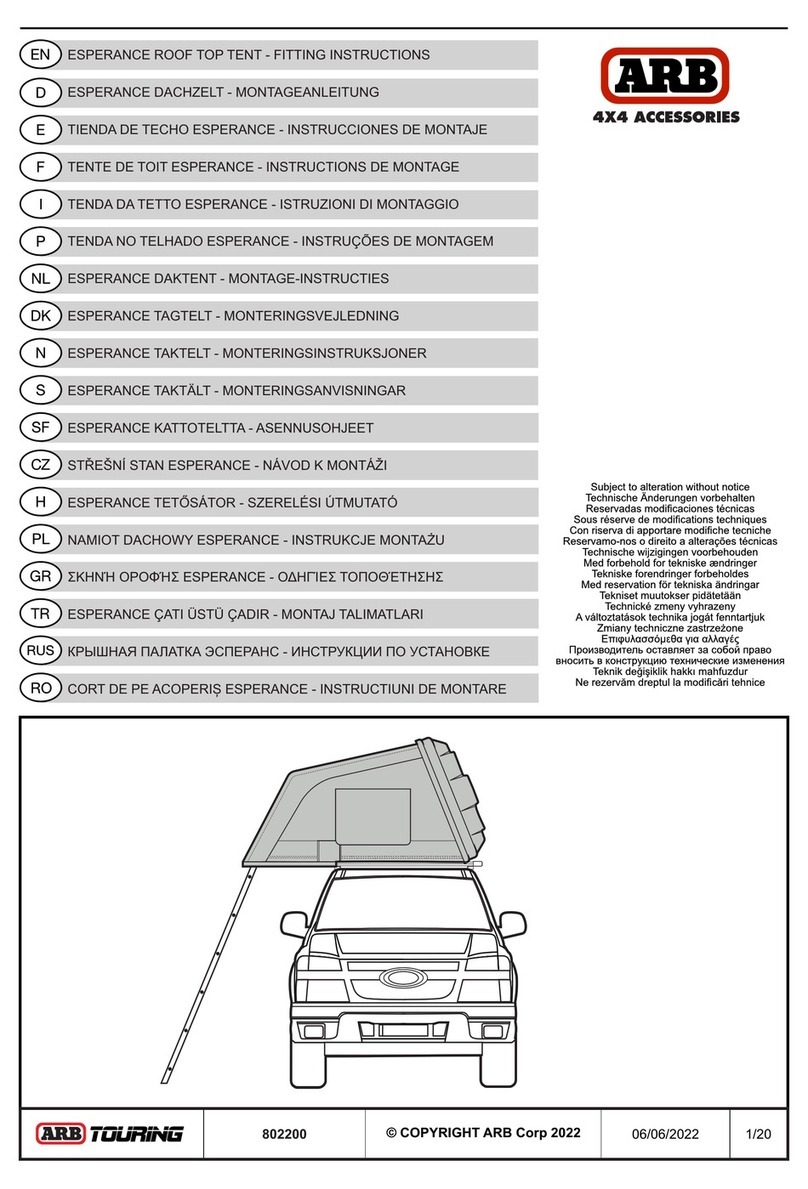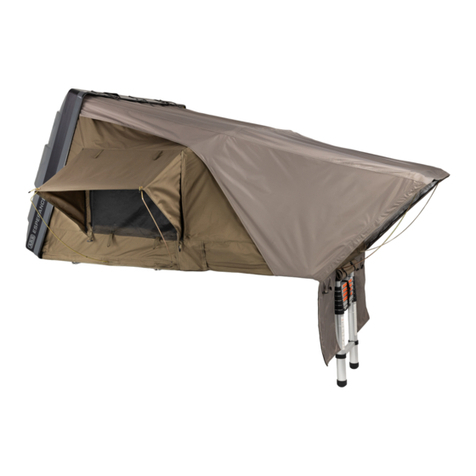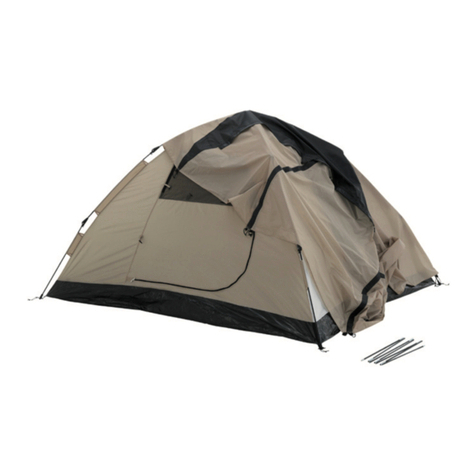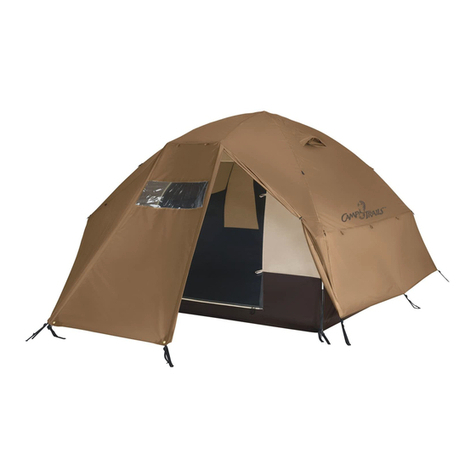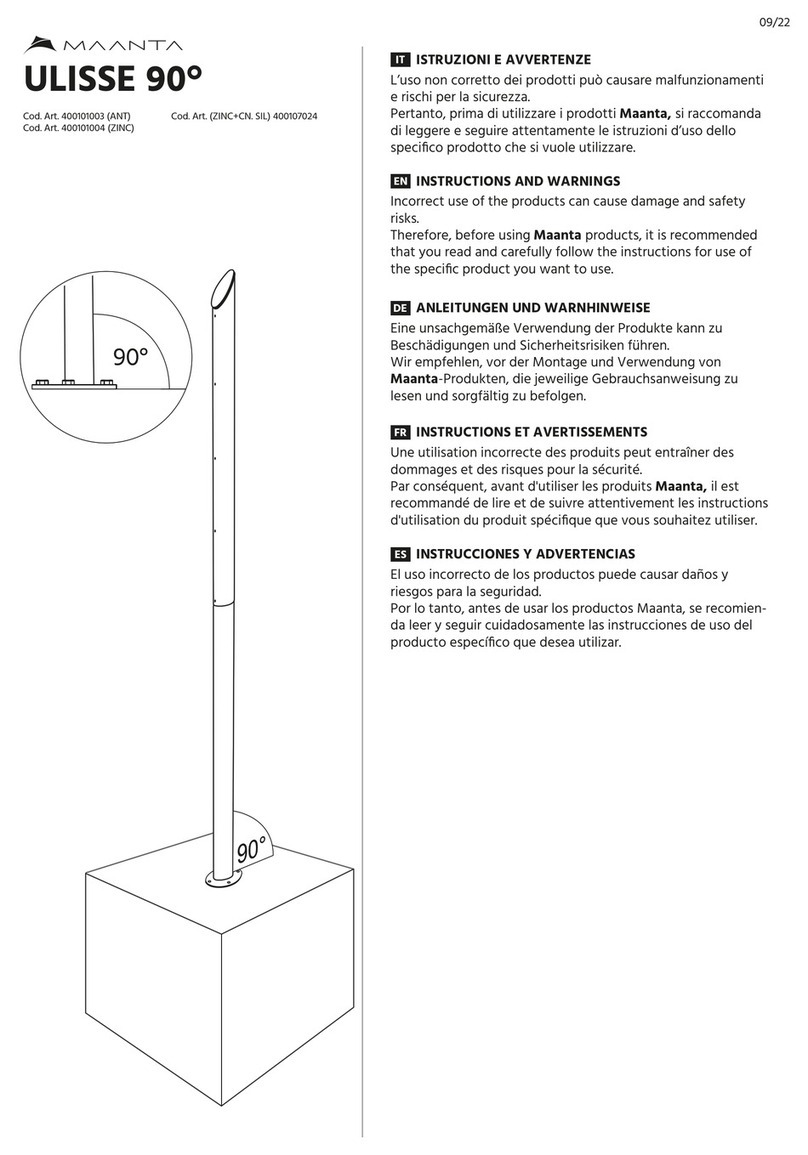
6
1.
Undo Ladder travel strap, by unclipping the buckle, Slide out the ladder
until the locking pins engage. See Image 1A
2.
Unzip the travel cover from the tent by unzipping around the 3 edges
and unclip the remaining edge. See Image 2A & 3A
3.
Release the hold down Velcro straps on each side of the tent. See image 4A
NB - When closing the tent, do not use excessive force
on the side retaining Velcro straps. See caution on page
8.
4.
The ladder can now be used as a lever to open the tent. Pull the ladder
down and out so the tent unfolds like a book. See image 3A. The two bases
of the Rooftop Tent lock together with a Tongue and Groove locking
extrusion.
NB – While opening the Rooftop Tent, hold the transit cover
well away from the tongue and groove locking extrusion to
prevent damage to the cover. See image 3A. Following this
caution will prevent pinching of the cover and potential
damage to the locking extrusions.
NB – To avoid serious injury, ensure that your hands, fingers
and any other bits are well away from the locking extrusions
pinching points when the Rooftop Tent is being opened.
5.
Rest the ladder on the ground, to create a flat sleeping surface inside the
tent. See image 5A
Note: if the angle of the ladder is too upright or does not
reach the ground you will require a ladder extension. See
page 9.
Make sure the ladder is safe and will not move and climb into the Rooftop
Tent. Use the two black straps inside the tent to assist in getting in and out of
the tent. The Rooftop Tent has 3 bows which tension the canvas above the
floor of the Rooftop Tent. The Entry bow and the Head bow are both
extendable. Slide and extend out the Entry and the Head aluminum bows. To
tighten the bows, rotate the tube clockwise on both sides of the bow to lock
it in position. See image 6A. To Undo the bows twist anti clockwise.
Note: Do not overtighten bows, they only need to be firmly
tightened
6, Unclip the bungee straps inside the tent which are there to assist in folding
the tent neatly when packing the Rooftop Tent away. See Image 6A.
7. Retrieve the spring steel rods (SSR), these are used to tension the outside
window awnings and flysheet. Hook the shaped end of the SSR into the
eyelet of the front window awning. Insert the other end of the SSR into the
hole in the base of the rooftop tent, passing through the slit in the rooftop
tent skirt. This will require you to bend the SSR so that the angle of the SSR is
equal to the angle of the hole into which it should be inserted. NB reverse
this procedure to remove the SSR from the hole in the base of the rooftop
tent. See image 7A
Your Rooftop tent is now setup.
See image 7A
8. Repeat all the above steps in the reverse order to pack away your rooftop
tent. When packing away your tent, depending on your bedding volume it
may be necessary to take your pillows out of the tent.
1
2
4
5
6
7A
1A.
2A.
3A
4A
5A
6A
**Please make sure the tent
Make sure tent is dried
before packing away, if the
tent needs to be packed
away wet, please make sure
itissetup as soon as possible
todryout**







